BAE Systems has successfully demonstrated a major leap in British uncrewed air system (UAS) capability, completing the first live-fire trial of a precision-guided munition launched from a multi-rotor drone.
The tests, carried out in the United States, saw a TRV-150 UAS destroy both airborne and ground targets using BAE’s APKWS laser-guidance kit.
The TRV-150 is a modified version of the Malloy T-150 heavy-lift drone, built in the UK and acquired by BAE Systems in 2024. Originally developed to support frontline logistics, the aircraft has now proven its ability to deliver strike effects at a fraction of the cost of traditional platforms.
“This is a major step forward in our ability to deliver low-cost precision strike capability from an uncrewed platform,” said Anthony Gregory, Business Development Director at BAE Systems’ FalconWorks. “Uncrewed systems are an increasingly important part of our customers’ arsenals and I’m delighted that we’ve been able to show how UAS technology can further help them maintain an edge on the ever-evolving modern battlefield.”
The trials took place at the US Army Dugway Proving Ground in Utah, where the TRV-150 was modified to fire the APKWS-equipped munitions. The APKWS system, already in service with the F-16, F-18 and Apache helicopters, converts standard 70mm rockets into guided weapons. All test shots during the trial achieved direct hits.
British engineers led the weapons integration, with FalconWorks drawing on cross-Atlantic collaboration between BAE Systems’ UK and US divisions, SURVICE Engineering and other defence partners. The TRV-150 is already fielded by the US Marine Corps as part of their Tactical Resupply Unmanned Aircraft System (TRUAS) programme.
Greg Thompson, President at SURVICE Engineering, said: “Providing medium UAS-delivered air and ground target strike capability will be a force-multiplying game changer and we are excited to play a role in bringing this new capability to our US and allied-nation warfighters.”
The successful demonstration highlights the increasing versatility of heavy-lift drones in the British and allied military inventories. Originally designed to carry loads of up to 68kg for short-range logistics missions, the TRV-150 platform has also been tested for mine clearance and now precision strike. Future variants aim to support payloads of up to 300kg.
The next development phase will focus on improving autonomy and refining targeting systems to allow greater mission flexibility. BAE Systems noted that this capability offers a cost-effective and highly deployable alternative for frontline forces to counter both conventional and emerging drone threats.




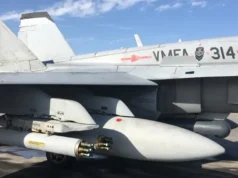

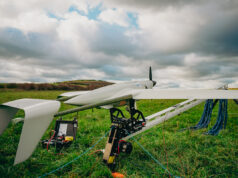
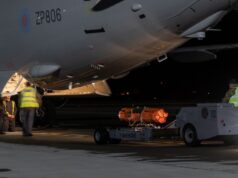
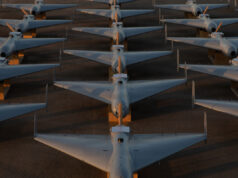
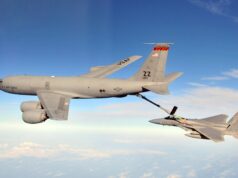
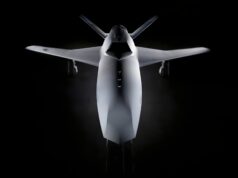

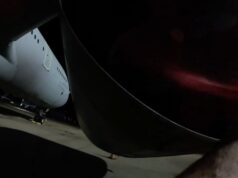
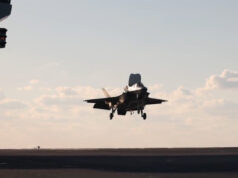

Excellent, this is what’s needed in quantity.
OK great now lets move forward quickly and get them into service. Even small numbers initially so that the services can start to develop their conops and doctrine for these systems.
Possible uses for the TRV-150:
RN:- Escorts and OPV counter narcotics smuggling surveillance and overwatch during boarding operations, light strike;
Army:- Surveillance and light strike;
RAF:- Base security using non lethal effectors, base defence against terrorists, SF, etc. using lethal effectors.
Cheers CR
You’ll be pleased to hear they are already in service. The carrier strike group took a bunch of T-150s for intra-group lift, logistics. As I recall, the Marines have used them and I think the Army too, athough that was possibly just testing. They’ve also been used in Ukraine. This is an extra use for a relatively mature tech.
Yeh, I was aware of those applications and deployments. The RN are using them on CSG25 I see. I was referring to these new versions as they look like they have been evolved somewhat and I guess they have new software integrated to allow the firing of guided weaponry. Hence my point about developing conops and doctrine as I suspect firing lethal weapons requires more / different approach to their use…
I would hope that they could build on the current and expanding experience base so should help to ease these versions in to service.
Cheers CR
It looks like it has potential, how does it stack up against the Jackal drone with Martlet missiles?
I imagine, if we can get the Malloy systems to do what the Jackal can then the Malloy’s offer more versatility. 1 minute they can be firing a missile, the next they can be relaying medical supplies from one ship to another, then in another, monitoring a drugs trafficker (assuming it has a bolt-on camera and radio relay). It doesn’t look as menacing as a Jackal but, if it works and can do multiple tasks, then this is the one we should be going for IMHO.
The unit cost of APKWS is far less that than half that of Martlet. An important factor if you’re looking to use this to take down mass produced, cheap drones.
I can’t help being a bit cynical given, for instance, the continuing lack of teeth our navy has. Sure new ships are on their way but what about the weapons fit? This drone is a platform with obvious offensive capabilities so we will probably not employ it. We could launch a 15 year concept phase exploring how to swap its missile for a few defensive flares.
Good news, now instead of the usual story of faffing about for the next 5-10 years lets get a production line going and test them on mass in Ukraine. Front-line data and user feedback can then be used to modify it as necessary.
Why were the trials in the US and not the UK? Weather?
I don’t think this has got as far as the MoD yet so no informing decisions needed at this stage.
I assume it is because the military testing / proving grounds in the US have more space, more privacy.
I assumed it was because the testing was to show their worth to the US military, in the hope of further sales.
It’s an American weapon, so this was probably where all the testing is done.
Malloy is British and was bought by Bae Systems. I can only imagine is becuase of the export controls o the weapons.
I think he was referring to the weapon itself the drone is firing. The missiles are probably Hydra which are US though just checked and other rockets can be used, but doubt there is any uk produced equivalent being used. The Bae guidance system applied to these rockets is I suspect (though I don’t know I note that the story says Bae and Bae US Combined on this, couple other US companies contribute to APKWS too). The drone itself yes thats Bae uk. Probably as its air to air as well no uk firing range could handle it, probably easier to deal with and adjust the projectiles where they are produced, permissions to use any US sensor elements out of the US would probably needs clearance and yes I suspect getting the US military interested must be a consideration too.
If shared UK-US integration, would the APKW rockets be worth putting on the F35Bs at least as a podded option?
TVR back with a bang.
Probably won’t buy any of these then,
I’m sure it will be useful however we really UAVs which can exceed the speed of the type of drones produced by Iran and Russia and knock them out of the sky with a single cheap round before proceeding to dispatch the next one. I’m not sure how this will keep pace.
Good point the Shahed is twice the speed of the Malloy drone so not ideal. I guess however as long as the Shahed or equivalent can be identified and tracked or spotted early enough and there are enough drones available in anticipation of attacks on predictable targets or areas then I guess they could be useful in intercepting them while similar drones to themselves would be easy targets to take down.
Use them from RN ships go drop munitions on drug smugglers. Pop some AI into them for said mission too. Real world testing at its best 🤣.
Let’s get some real life testing done in Ukraine then, find out how capable it is, identify and remedy real world problems that are found. The bonus will be cleansing the world of more Russians in the process, something I am happy to have my taxes fund.
Still unsure what is happening in UK regarding the Jackal UCAV Flyby sold a number to Taiwan & according to Jon Parker they had a full order book in the 1000s. Surely some of these will make into UK service!? 🤞🏼